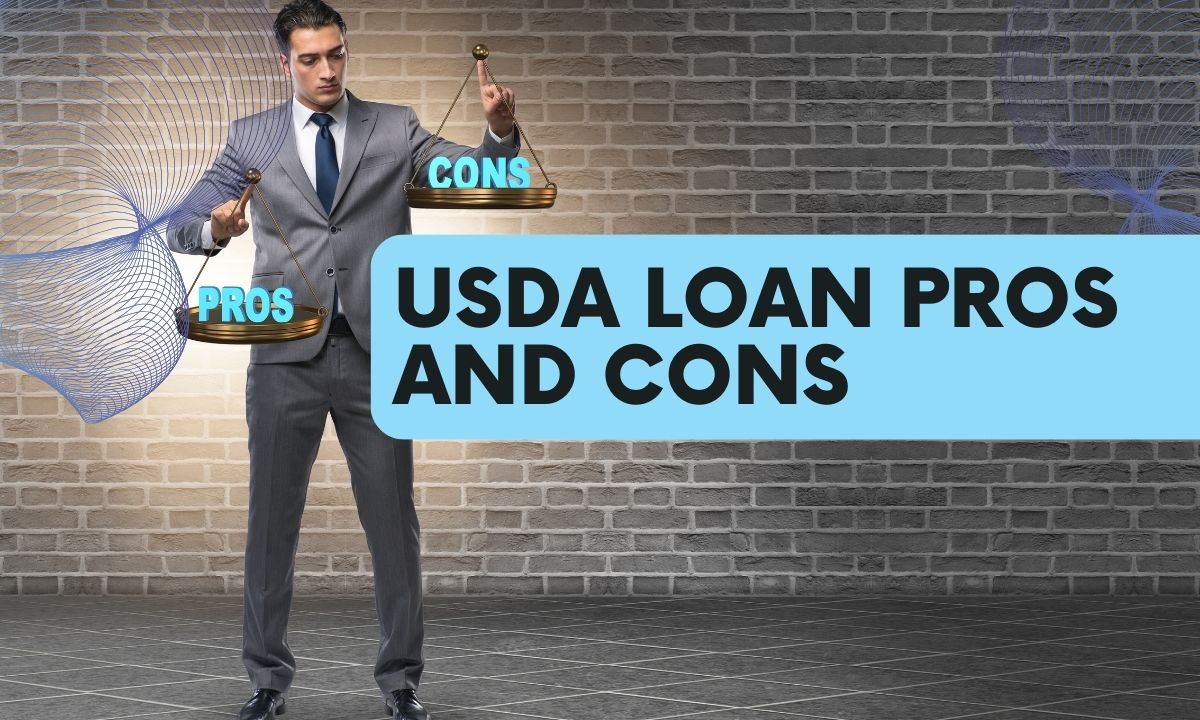What Is a USDA Loan?
USDA loan are form of loan assistance that could lower the cost of purchasing homes. They are geared towards people with moderate to low incomes who want to buy a home in rural areas. They may also be used to buy or refinance a property.
They are intended to assist those who might not be eligible for other kinds of home loans to realize their dream of owning their own home since they do not require a down payment and offer low interest rates, as well as more advantageous conditions.
How Does a USDA Loan Work?
There are two kinds that are USDA loans. Guaranteed loans are offered by private lenders such as Commercial Lending USA, while USDA direct loans are offered directly by the USDA. The difference is that USDA direct loans usually have more strict requirements and the borrowers must be considered to have a low income and are unable to qualify for any other kind of financial aid.
USDA loans can make the process of getting the loan much easier since they offer flexible lending criteria in the event that you obtain them from an individual lender. Through these loans you’ll be able to receive the full amount of financing and avoid the requirement for a down payment, in exchange for lower interest costs.
This USDA loan is available only for properties located in rural regions that are defined as those that aren’t located in urban areas with a small population. You can utilize this USDA Map to locate areas eligible that meet these guidelines.
If you are applying for a loan USDA loans function similarly to other mortgage programs if you’re working with an individual lender. In contrast to other loans, USDA loans don’t have penalties for prepayment.
As with other loans that are backed by the federal government it is not possible to utilize USDA loans to purchase vacation investments; they are only available to purchase primary residences. You can however use the loans to buy any kind of primary residence that ranges from newly constructed homes and foreclosures, to manufactured homes and condos provided they’re in a rural location.
USDA Loan Qualification Requirements
Because USDA loans are insured by the federal government which is why they have specific qualifications, which are in addition to your lender’s criteria. To be eligible for an USDA loans, you’ll have to satisfy the following conditions:
Income
USDA loans are specifically designed for people with low- or middle-incomes So there are restrictions on the amount you could earn. The amount you earn can’t be greater than 115% your median income of the area in which you want to purchase the home.
Furthermore, you need to demonstrate your capacity to repay the loan to the lender. This means that you must have an income source that is stable and having a DTI of 40% or less.
Credit score
The USDA doesn’t have any criteria for credit scores, therefore it’s the responsibility of the lender. The majority of lenders require scores of at least 640. However, you could be able to get an USDA loan even if you have poor credit, based on the lender as well as other aspects.
Ratio of debt-to-income (DTI) ratio
Your DTI determines the percentage of your earnings which is used to pay your debts each month. Most lenders want an DTI of not higher than 41%. With all loans, this is typical. This means that you should not spend less than 40% of your money is used to pay off debts such as existing mortgages, personal and car credit cards, loans and so on.
Location
The property needs to be within a rural zone that is eligible in order to be eligible for an USDA loan. The USDA offers an interactive map to aid you in locating specific properties or areas to determine their ability to qualify for a USDA loan.
Size of the property
The home’s size cannot surpass 2,000 square feet in order to be eligible for an USDA loan. There’s no limit to the property size limit, meaning your house can be built on any size of land.
Safety regulations
The property needs to be safe, sturdy and functional in order to be eligible for the USDA loan. The lenders are required to employ an appraiser to USDA mortgage properties. They appraise the property’s market value and to ensure that the property is in accordance with USDA requirements for the condition of the property.
Most appraisers will look for an aesthetically sound house with a foundation and roof that are in good order, which will allow families to relocate as fast as is possible. It should also have access to the house and HVAC systems that are in good working order.
They’ll also make sure that their electrical systems are secure without exposed wiring, and ensure that the plumbing system is functioning. Furthermore, the house shouldn’t show evidence of damage caused by insects and must be in compliance with the building codes of the state and local authorities.
FHA Vs. USDA Loans
USDA FHA and USDA FHA mortgages are among the most sought-after government-backed loans since they can lower the cost of buying an apartment. However, they’re targeted at different kinds of borrowers. For example, USDA loans are for buyers who are looking to purchase a properties on land that is rural and can only be obtained by people with low to moderate incomes.
However, FHA loans, backed by the Federal Housing Administration, are more readily available to homeowners and borrowers of all kinds. There are no restrictions on income with a greater flexible requirements for credit scores – scores of as low as 550 can be accepted. Furthermore, USDA loans come with an option to pay no down as well as FHA loans require a down payment however, they are at a minimum of 3.5 percent.
The borrower who isn’t eligible for USDA loans might still be eligible to receive FHA loans. Furthermore, these loans might be attractive if you do not want to be tied to a specific region.
Both programs are only for primary residences however, using FHA mortgages, homeowners may buy multi-family homes that have multiple units. Furthermore, both offer first-time homebuyer grants to reduce the cost of purchasing a home.
Pros and Cons of USDA Loans
There is no down payment requirement and more flexible lending criteria, USDA loans are appealing to many potential borrowers. But they’re not necessarily the best choice for every homeowner. Knowing the advantages and disadvantages of USDA loans will aid you in making the best decision based on your personal financial situation and longer-term goals.
USDA Loan Benefits
USDA loan benefits revolve around the idea of saving money. The main objective of the program is to assist people with low and moderate incomes purchase a house. In this regard, some of the biggest advantages of USDA loans are as follows:
- There is no down payment needed:Unlike other mortgage programs such as FHA as well as conventional loan USDA loans do not require a down paymentan obstacle that is common to homeownership. Instead, you can enjoy 100% financing through the USDA loan, without having to worry about putting aside money for many years.
- Credit score requirements for low credit scores:The USDA doesn’t have an upper limit on credit scores however, your lender will. Most lenders permit credit scores of as at as low as 600.
- Without PMIPrivate mortgage insurance (PMI) is required for conventional loans if customers put an amount less than in order to ensure the lender’s protection in the event in the event of default. However, as the USDA offers an 90 percent guarantee on loan notes which reduces the risk for lenders, there is no requirement for PMI. The loans are instead accompanied by the guarantee fee, which is a one-time fee of 1%, and annual fees of 0.35 percent of the loan amount.
- Competitive rates of interest:USDA loans typically have lower interest rates as compared to FHA or conventional loans since 90 percent that loan are guaranteed thus reducing the risk for lenders to lend to the borrowers.
- No reserve required: Some lenders require applicants to have several months in reserves based upon their credit scores or DTIs. In contrast, USDA loans don’t require reserves to prove that you have enough funds remaining to cover a few months’ expenses.
- There is no prepayment penaltySome lenders will charge penalties for prepayment for paying the mortgage off earlier since it means that you’ll be charged more interest. With an USDA loan it is not subject to penalty for prepayment, meaning you are able to pay off your loan or even sell your house as quickly as you’d like.
USDA Loan Drawbacks
A comparison of USDA loans pros and cons will help you decide if they are the most suitable option. USDA loans aren’t the best option for all buyers, so it is important to be aware of these disadvantages prior to purchasing an investment property:
- Requirements for location:USDA loans are only accessible to properties located in rural areas. This could mean you’ll be being in a location that isn’t ideal. Since the majority of people prefer to be close to their work and other amenities and amenities, living in a rural area may not be ideal for everyone.
- Property type restrictions:You can only use the USDA loan for your primary residence. Investment properties that generate income or vacation houses aren’t eligible for the aid of a USDA loan.
- Limits on income If you’re planning to live in a rural location there is a chance that you’ll have a high income to be eligible for an USDA loan. The borrower must meet a set of income guidelines based on area that the home is located. If you earn more than the limits then you will not be eligible to borrow.
- Costs of guaranteeing: The upfront and annual guarantee costs could increase by thousands of dollars the total cost of your mortgage and therefore it might not be the ideal loan for people who can afford the larger down cost.
- More time for underwriting:USDA loans typically have an extended underwriting time because they have to verify information like your income, and verify that the location of your property is considered rural in accordance with the USDA’s requirements. In addition, they’ll have to engage an appraiser to inspect the property to make sure that it is in compliance with USDA’s requirements regarding property.
How to Get a USDA Loan
If you are applying for an USDA loan, you are offered 2 options to choose from: guarantee loan from an individual lender or a direct loan from USDA. For direct loans, applicants must not be able to obtain financing through another method. Therefore, most home buyers will not be eligible. However, loans that are guaranteed by private lenders are not subject to as strict requirements, and you might still be eligible for an USDA loan.
If you feel that you believe that a USDA loan is appropriate for you, take these steps:
Get pre-approved
Every first-time homebuyer’s checklist must include the process of getting pre-approved for a loan. Pre-approval is a requirement to be eligible in the USDA loan as well as the amount that a lender will to allow you to borrow. The pre-approval letter gives you an overall notion of what you are able to pay for, which could help you find a house simpler and help you appear more appealing to buyers.
USDA loan lenders usually consider the frontand back DTI ratios. The front-end ratio estimates the amount of your monthly income goes towards paying your mortgage, whereas the back-end ratio determines the percentage of your earnings that goes towards all of other debts you have to pay each month.
The majority of lenders prefer front-end ratios that is 29% as well as a reverse-end ratio of 41 percent for an USDA loan. But, you could still be eligible for a loan with an extremely high DTI.
It is important to keep in mind that pre-approvals aren’t a guarantee that you’ll be eligible for the loan. Because lenders don’t examine your financial situation until you have submitted your mortgage application the eligibility criteria and loan amount could alter. In addition, you’ll have to be able to pass the USDA appraisal of your property in order to be eligible for the loan.
Find a place to live and then apply for a loan
Be aware that USDA loans can only be used for homes located in rural regions. It is possible to work with a realtor to find homes that are regions that are eligible or consult the USDA’s map to locate homes. Don’t think that a house is qualified to receive an USDA loan solely because of the place of residence. Instead, you should look over on the maps to see whether the property meets USDA’s guidelines.
After you’ve located a house and you’ve found a lender, you can submit an online application for the lender you’ve chosen and supply all the details they require to confirm your financial standing.
Be patient and wait for the underwriting
The process of underwriting the USDA loan may take longer than underwriting other types of loan, because the borrower and property must comply with certain guidelines. But, Commercial Lending USA aims to finish the underwriting process and grant you loan approval within thirty days or less. We’ll look over your financial documentation to determine if you are eligible and also the amount of the loan.
Get an appraisal
Once the underwriting process is completed the lender will then request an appraisal of the home to establish its value and make sure it meets the USDA’s property standards.
Pay off your loan
If your loan application is approved, you’re able to choose the date for closing the loan. Although USDA loans do not require down payments, you’ll have to pay closing charges, which can be as high as 2 to 6 percentage of the loan’s value. The closing costs for USDA loans can range from conventional fees such as appraisal and origination fees, to title insurance and taxes. There are, however, closing costs that are specific that are only applicable to USDA loans. Guarantee fees are a one-time fee of 1%, which is usually payable at the time of closing. You may also decide not to pay it at the time of closing and instead, roll it into the loan.
In addition, if you buy the home at a price lower than its appraised value, you may roll a portion or all of the closing costs into the loan.
USDA Loan Alternatives
A majority of people do not qualify for USDA loans due to their income is above the 115% threshold for the location in which they plan to buy property. But, if you’re not able to afford the funds to pay a substantial amount of downpayment, you have the option of buying an apartment. Check out these USDA loan options to discover the perfect home loan depending on your specific situation.
FHA Loans
We’ve previously discussed the way FHA loans function and how they different from USDA loans. If you’re not eligible for the USDA credit, then you could be able to get an FHA loan and need to make an 3.5 percent down amount. Although that’s higher than zero, it’s accessible to most customers.
FHA loans are ideal to borrowers with lower credit scores that aren’t able to afford large down costs. You could be eligible for FHA loans even with credit scores that is as lower as 580. But, it’s important to keep in mind that although FHA loans do not have the requirement of a guarantee however, they need a mortgage insurance cost (MIP).
MIP includes an upfront payment as well as an annual fee that varies in accordance with your loan amount. The upfront cost is 1.75 percent of your amount of the loan and is due at the time of closing, or it may be rolled into the loan. The length of time you pay MIP will depend on the amount of the amount you pay for your down. The more you pay for your down will be, the less you’ll have to pay in MIP. If you put down a 10 percent down payment or more the amount you pay in MIP will be only for a period of 11 years. If you make a down payment under 10% when you the time of closing and you pay MIP for the entire term of the loan, unless you refinance it to a conventional loan.
VA Loans
VA loans are insured through the US Department of Veterans Affairs (VA) and include advantages like no minimum down-payment requirements and minimal minimum credit scores and low closing costs. In order to be eligible for the VA loan you must be a qualified active duty military personnel or veteran, or spouse of a deceased. USDA as well as VA loans are alike in their benefits, however, you might be eligible for one or the other based on whether or not you have served in the military.
In addition, as with other mortgage programs that are backed by the government, VA loans don’t come with mortgage insurance from private lenders. You’ll still have make payments for the VA funding fee, which could be up to 3.6 percent in certain cases. It’s a one-time cost, compared to annual and upfront expenses, and it can possibly save you money throughout the duration of your loan, based on the conditions.
The main difference between the two kinds of loans is the fact that the VA is a loan that limits the kinds and amounts of closing costs that a lender is able to charge the borrower. Fees that are not allowable include penalties for prepayment as well as attorney fees a lender isn’t allowed to charge the borrower. Furthermore, the amount that a lender can charge to originate the loan is set at 1percent of the loan amount.
Conventional Loans
The conventional loans is the most frequent kind of loan for first- or second-time buyers since they’re quite simple. They do have more stringent requirements for lending They typically come with low rates and you’re eligible for a loan with just 3percent down. However, if you decide to put an amount less than percent, you’ll have to cover PMI.
Conventional loans can be accessed to properties of any location which means you’re not limited to areas in rural areas that qualify. Furthermore, they don’t come with the same restrictions on residence types and can therefore be used to purchase primary, secondary or vacation homes as well as investments properties.
However, conventional loans may be harder to obtain due to their stricter requirements for lending, like an average credit score of 620. In addition, even though USDA loans are subject to income limitations, there’s no limit on the amount you can borrow for conventional loans. However, they have limit on loans based on place of residence.
Consider the Advantages and Disadvantages of USDA Loans Before Applying
Knowing USDA loans’ advantages and disadvantages will help you decide if they are the right option for your financial situation and goals for homeownership. Although USDA loans may reduce the cost associated with homeownership but not all is eligible. Also, not all people want to buy a home in a rural location.
Are you unsure whether you should consider if a USDA loan is the right one for you? Or what are alternatives are available? Get in touch with Commercial Lending USA today. Our loan experts can assist you select the most suitable mortgage for your home depending on your specific situation and goals for homeownership.



